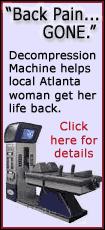 The news Friday that the U.S. economy shed 80,000 jobs in March, the worst loss in five years, triggered a wave of hand-wringing, fault-finding and proposed fixes on Capitol Hill and the presidential campaign trail. The jobs report added to a building consensus that the country has slipped into recession, one that may have begun earlier this year or late last year.
The news Friday that the U.S. economy shed 80,000 jobs in March, the worst loss in five years, triggered a wave of hand-wringing, fault-finding and proposed fixes on Capitol Hill and the presidential campaign trail. The jobs report added to a building consensus that the country has slipped into recession, one that may have begun earlier this year or late last year.
Yet past efforts to head off or alleviate recessions with crash spending programs and tax rebates
- classic antirecessionary plays - often did not kick in until after the recession had ended.
"History shows very often these programs even go on for years and years after the recession is over," said economist Bruce Bartlett, who worked in the Reagan and elder Bush administrations.

Of the eight U.S. recessions in the six decades since the end of World War II, only once was the stimulus package passed before recession's end, Bartlett found. That was legislation enacted in June 2001
- containing the first round of President Bush's tax cuts - to combat a recession that began in March 2001 and ended in November 2001. "That would be the rare case," Bartlett said.
In the seven other postwar recessions - November 1948-October 1949, August 1957-April 1958, April 1960-February 1961, December 1969-November 1970, November 1973-March 1975, July 1981-November 1982 and July 1990-March 1991
- stimulus packages were either passed right as they were ending, or considerably later.
Part of the reason for the mismatches - besides usual congressional delay
- is because it often wasn't known for months, even years, when a recession officially began and ended. Two straight quarterly contractions in the gross domestic product is the common definition. But the official determination
- made by the National Bureau of Economic Research - takes longer and is based on a more complicated formula.

It's still too early to know the impact on the economy of the $168 billion stimulus package passed by Congress and signed by President Bush in January. Rebate checks of up to $1,200 per couple and even more for families with dependent children will start arriving in mailboxes in May. Bush has argued against additional stimulus packages at this time.
The Federal Reserve also has antirecessionary weapons at its disposal, primarily the ability to lower short-term interest rates and inject more liquidity into the financial system. The Fed has dropped rates a full 3 percentage points since September to 2.25 percent. Studies show it takes nine to 12 months for Fed rate cuts to affect the economy.
The central bank recently took extraordinary steps to calm financial markets, including arranging the $29 billion rescue of investment house Bear Stearns and offering hundreds of billions of dollars in new emergency loans to investment banks and other financial institutions.
The new jobs report - showing a total loss of jobs so far this year of 232,000 and a jump in the unemployment rate to 5.1 percent from 4.8 percent
- puts the Fed under pressure to cut rates further and to do more to calm jittery markets. But there are limits to how much more it can do.
It's probably too late for the Fed or Congress to do much else that will help end the recession earlier than it will on its own, said David Wyss, chief economist at Standard and Poor's.